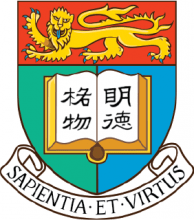No article on current geopolitical trends is complete without prominent mention of China’s challenge to US hegemony. This is especially true of global higher education, where the huge amount of money being poured into China’s research budget is prompting questions about whether it might be just a few years from becoming the world’s leading research nation.
But how exactly can that tipping point be identified? And if China does “overtake” the US, what will that mean for global research priorities, international collaboration and scientific standards?
A starting point for examining China’s rise is often the data on how quickly it has ramped up its research output. For instance, between 1997 and 2017, it grew its number of articles, reviews and conference papers indexed in Elsevier’s Scopus database by a staggering 1,322 per cent. This compares with 64 per cent for the US and 111 per cent for members of the European Union.
Although China remains just short of matching the US on volume, it already produces more papers in at least a dozen subject areas, including computer science and engineering, and it has been predicted that it could surpass the US overall in Scopus by 2022. Meanwhile, measures of research output that look at authors’ exact fractional contribution to each paper have even suggested that the US is already behind.
However, research volume is arguably a crude metric on which to measure scientific prowess since it takes no account of the quality of what is produced. When proxies for quality are compared, China is further from matching the US, but the gap is undeniably closing here, too.
On field-weighted citation impact, a measure in Scopus that takes account of varying citation patterns in different subjects, the US and the EU maintain a healthy lead. But China’s score has risen from less than half the world average at the turn of the millennium to almost matching the world average in 2017 (see top graph, page 37). And while the US is well above the world average, it has been declining slowly since 2014. An analysis carried out by Elsevier last year suggested that if these trends continue, China could overtake the US on field-weighted citation impact by the mid-2020s.
Meanwhile, on the percentage of scholarship whose citation count is in the top 1 per cent in its field, China overtook the EU in 2016 and looks set to match the US by 2020 on current trends.
This increase in quality is reflected in the fact that Chinese researchers are now publishing much more extensively in the most prestigious journals. The latest release of the Nature Index, which analyses research published in 82 high-quality natural science journals, shows that although China’s authorship count in 2017 was still just under half that of the US, it had jumped by 13 per cent in just one year.

However, one question that always emerges when China’s rise is discussed is whether wrongdoing or game-playing has distorted the picture. For example, China has been involved in some of the most high-profile and widespread examples of suspected peer review fraud that have been uncovered in recent years. Typically, such fraud occurs when the email addresses of the authors’ suggested peer reviewers turn out to be controlled by the authors themselves or by companies connected to them.
In April 2017, more than 100 Chinese-authored papers were retracted en masse by the journal Tumor Biology after editors found “strong reason to believe that the peer review process was compromised”.
And according to data from Retraction Watch and published by the website Quartz in 2017, Chinese-authored papers accounted for more than half of the retractions for fake peer review between 2012 and 2016, while Taiwan accounted for another 15 per cent – the second highest amount. However, at 276 and 73 papers out of a total of 502 papers, it is only fair to note that the detected cases of fake peer review accounted for a minuscule proportion of the 9.3 million pieces of research published during the five years in question, according to Scopus.

Chinese research faces other issues, too. Plagiarism concerns are never far from the headlines, while Times Higher Education has uncovered examples of Chinese institutions making large cash offers to Western researchers in return for listing the institution on their papers, in an apparent attempt to improve their rankings. However, it is very difficult to determine the true extent of any of these practices.
Ivan Oransky, founder of Retraction Watch, says that while “in many ways fake peer review is the easiest to [spot]”, China has “many, many other problems”. He, too, is unsure of their overall impact, but believes that it is important to look at the incentives that Chinese researchers are given.
“There are a few things that happen in China that either don’t happen elsewhere, or happen on a smaller scale,” he says. One example is the bonuses offered for publishing in journals with a high impact factor. Another is the promotions for Chinese clinicians who publish.
“So it is like publish or perish on steroids. What that has given rise to…is that organised crime has realised that there is potential here,” Oransky says. This has led to companies sprouting up in China “that may claim to be doing something very legitimate but actually aren’t”. He gives the example of companies that write manuscripts for researchers and then also go on to sell those manuscripts to other researchers for submission to different journals under their own names.
Chinese research productivity: rapid growth
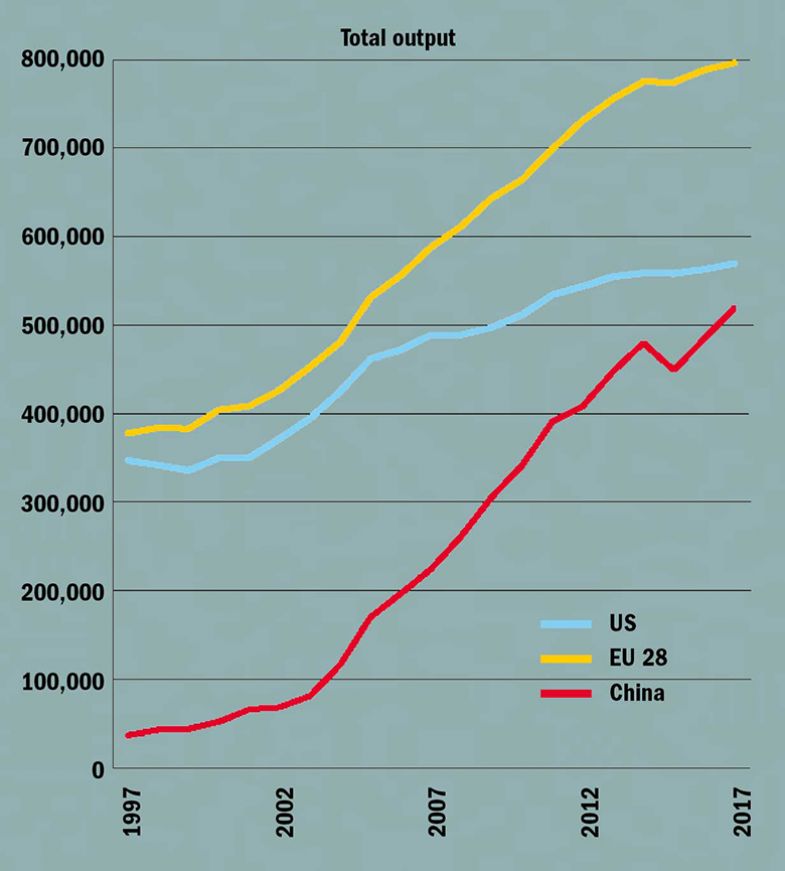

Oransky says that the fixation on whether China is overtaking the US on research volume – which in his view is an “irresponsible” way to assess relative performance – does not help matters. “I’m sure the Chinese government loves that, so it is going to create incentives for people to publish more papers,” he warns.
For Rui Yang, associate dean for cross-border and international engagement at the University of Hong Kong, the high-profile episodes of fraud have a knock-on effect for Chinese science that will harm it in the long run. “The immediate effect is that international circles [lose] trust in China’s research, and scholars are no longer keen to work with Chinese colleagues,” he points out.
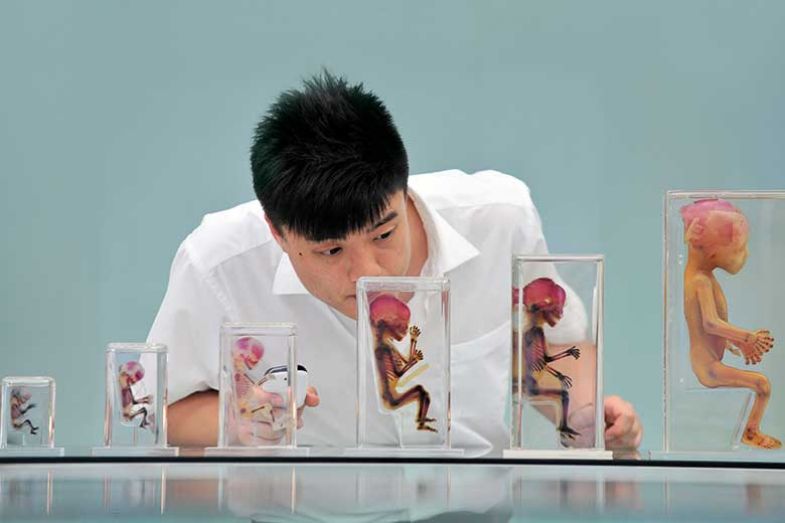
This reputational risk is not lost on the Chinese government. It came down hard on the more than 400 academics implicated in the Tumor Biology case and, last year, announced a range of reforms designed to clamp down on academic misconduct. The recording of instances in a national database could lead to the researchers involved being blacklisted and prevented from accessing future funding or jobs.
Nicholas Steneck, an expert in research integrity at the University of Michigan, says it is “too early to tell” if China’s crackdown will bear fruit. But, he adds, when assessing the impact of misconduct on Chinese research it is also important to remember that the problems are not confined to China.
“It certainly would help if publication incentives were more realistic, but that is true in most countries,” he says. “Globally, there is too much misconduct in research. No country can sit back and say: ‘We are doing a good job.’”
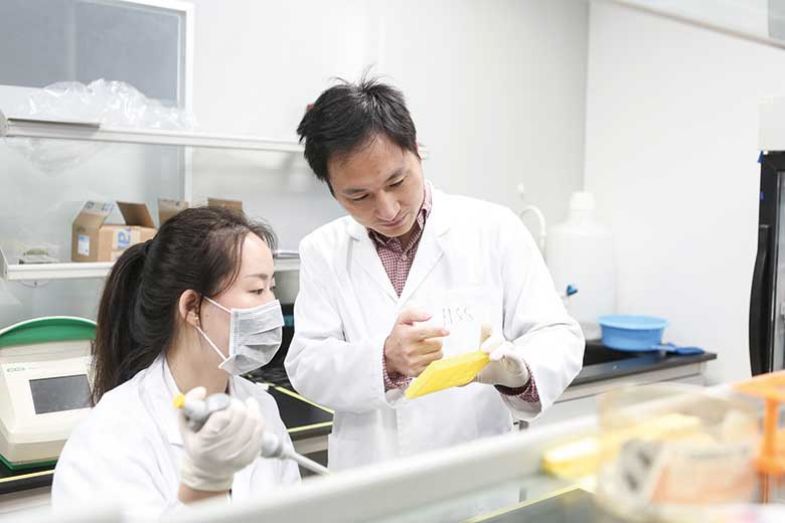
He concedes that the difficulty of controlling China’s gigantic research system means that it “may have more questionable publications than other countries. But it also does excellent research based on high standards of integrity. I think China should be given a chance to show that it is making a sincere effort to improve integrity.”
Other observers suggest that the more closely China becomes involved in increasingly globalised scientific collaboration networks, the more its researchers will, of their own accord, strive to adhere to international standards. And this trend will only be furthered by the huge numbers of Chinese academics being trained abroad, they add.
William Kirby, Chang professor of China studies at Harvard University, says that “any place where there is enormous pressure to publish – and that is certainly true in China…[imposes] pressures for people to bend professional norms. So that is a worry, but I don’t think that is a particularly significant worry in the long run because of the growing strength of professional oversight…and because of the strength of international standards.”

He says this should apply to any concerns about ethical standards, too. Such concerns were raised by the case of He Jiankui, who sparked an international outcry last November after using the CRISPR-Cas9 gene editing technology in human embryos to create the world’s first “gene edited” babies. Chinese state media said that he had deliberately evaded ethical oversight in pursuit of fame and fortune, and he was fired from his position as associate professor at Southern University of Science and Technology (SUSTech). The Chinese government also announced a temporary halt to all research involving human gene editing.
Responding to this case, Oransky says there is a “risk in pointing to China as the problem child” regarding research ethics when there have been plenty of instances of ethical lines being crossed elsewhere, in pursuit of headline-grabbing findings. “I see enough big splashy stories like that coming out of other countries to kind of wonder whether this is singular,” he says.
Western concern about Chinese research misconduct is intensified by a degree of bias. Such prejudice is hard to prove, but there are some suggestions, for instance, that China’s true research prowess is actually underestimated owing to its researchers being held to a higher standard than everyone else by Western editors, reviewers and other authors deciding who to cite.
Speaking recently about the release of a report on artificial intelligence research, for instance, Maria de Kleijn-Lloyd, senior vice-president of analytics services at Elsevier, said that Chinese researchers sometimes raise concerns that the “relative isolation” of their AI research is in part a consequence of their work not “being recognised in the West”.
“So on my list for further research, I would like to know who cites who. Are Chinese researchers being cited primarily by other Chinese researchers or by researchers in the US, Europe or wherever?” de Kleijn-Lloyd asks.
Chinese research quality: a mixed picture
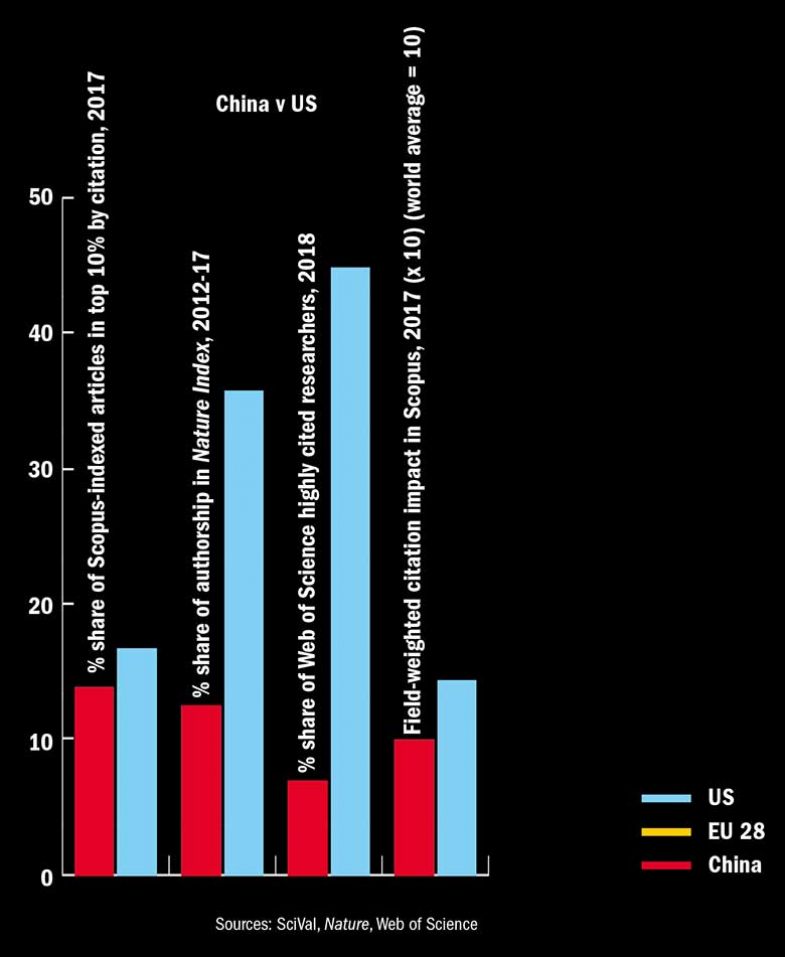
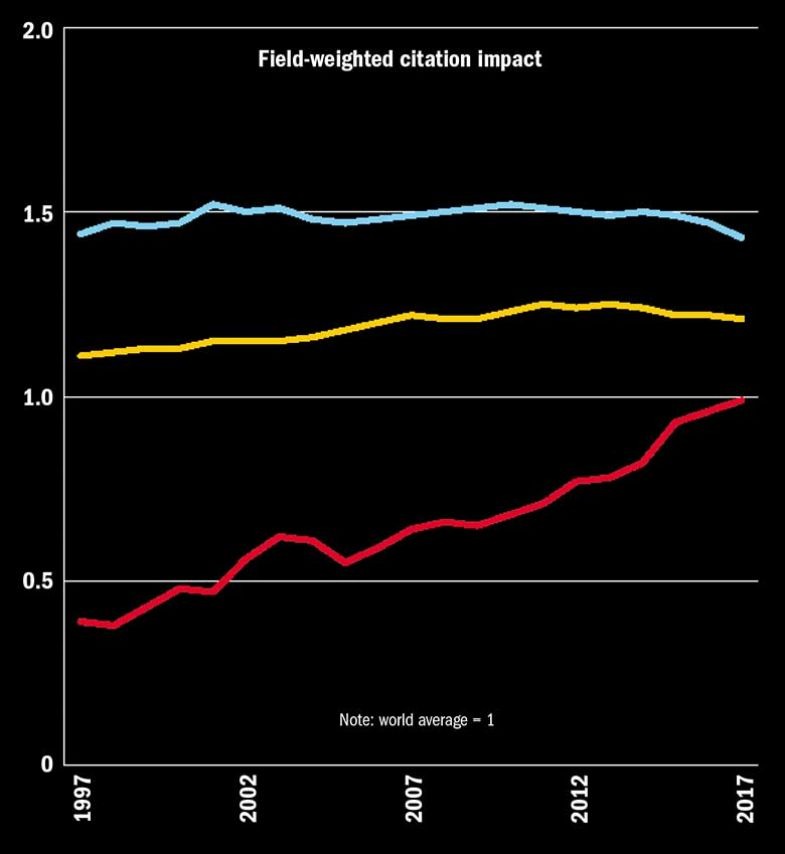
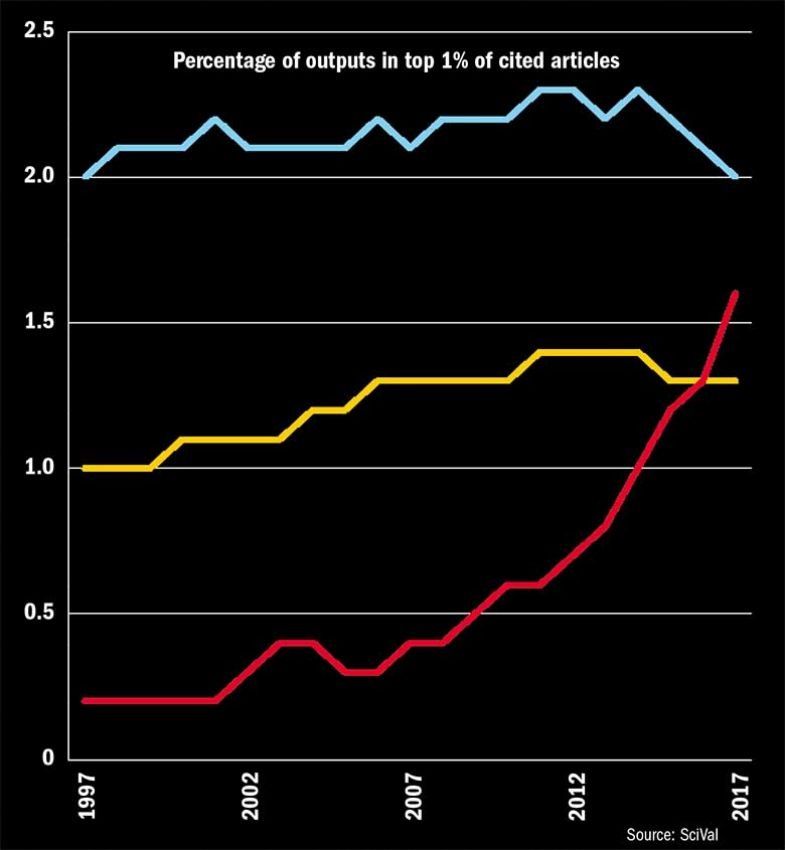
No doubt citation patterns will alter of their own accord if and when China does take over as global research’s centre of gravity, and commands the esteem that goes with that. But that seems likely to happen much more quickly in some disciplines than in others, given China’s major concentration on science and, in particular, fields such as engineering, computer science and biotechnology.
Indeed, some observers fear that this vast mass of research in science, technology, engineering and mathematics could have a gravitational effect on the whole of global research, drawing it away from the humanities and social sciences. But Harvard’s Kirby says that while it is true that China has concentrated a huge amount of resources in areas such as applied science, “it is actually not that different to what is happening in universities in the West”, where there has been “a gradual but very steady and accelerating trend” for these fields to receive more funding.
At the same time, says Marijk van der Wende, distinguished professor of higher education at Utrecht University, China is “well aware” that some of the skills that come from studying other subjects, such as creativity and critical thinking, are vital to its development as a higher education power. “China knows that it has to become more creative and that innovation does take more than STEM alone,” she says.

Her own work has also shown that even in STEM, Chinese experts are critical about the extent to which China has been able to foster a “real culture of excellence”, in which research is driven by “intrinsic motivation and scientific curiosity, rather than external, material or short-term performance drivers, such as compensation for articles”.
There are “explicit examples in the world of how you [rectify] this by granting the top researchers a free environment to enquire”, van der Wende says. Such research independence in the humanities and social sciences as well as STEM would also help to foster interdisciplinary cross-fertilisation, another great basis for innovation, she says.
The difficulty is that, politically, China seems to be moving in the opposite direction, discouraging autonomy and free thought. This is shown by developments in parts of the system that have traditionally had more research independence, such as Hong Kong, where the Communist Party of China appears to be tightening control over research and university governance.
Kirby adds that if he “were to think of two words that summarise the challenge Chinese universities have in becoming leaders in the [research] world, those two words are ‘the party’, which is much more interested in control than in creativity”.
“Under [President] Xi Jinping the role of the party has got stronger and stronger in every type of institution, but particularly in institutions of learning,” he says. “If this were to continue, it would be a permanent limitation on the capacity of Chinese universities to lead.”
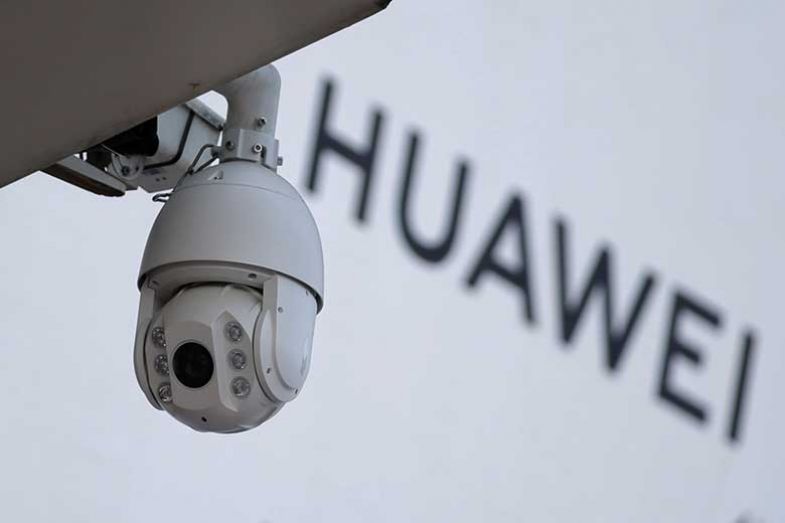
However, Kirby says that China still has the potential to have a hugely positive impact on global research, in the same way that US universities did at the beginning of the 20th century. “The rise of another great centre of higher education and of research is a good thing and hopefully will lead to greater collaboration across borders and healthy competition,” he says.
He adds that much depends on how the US and Europe react – or don’t – to China’s emergence. The US’ current status as the go-to place for research collaborations, for instance, could be lost more quickly if the country continues to cut resources for public higher education.
“American taxpayers have been encouraged by their politicians to be penny wise and pound foolish: not to invest in the education of their children, not to invest in the basic research that has been the engine of innovation in higher education and industry,” he says.
A project being led by Utrecht is examining China’s massive Belt and Road investment initiative across Asia, Africa and eastern Europe, and what it will mean for global higher education; van der Wende suggests that, in light of its current trade conflict with the US, China may prefer to work with the European Union.
Futao Huang, a professor at Hiroshima University’s Research Institute for Higher Education, points out that China modelled its modern higher education and research systems on those of continental Europe: “Both China and the main EU countries share more similarities in higher education and science research than China does with either the UK or the US,” he says.
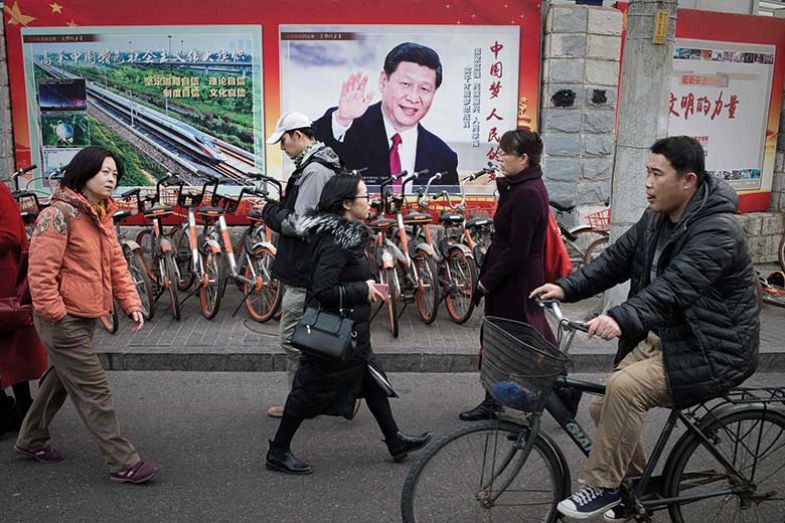
The direction and extent of collaboration between China and the West may also depend on whether levels of trust can be maintained around the development of technology. Recent tensions over Western partnerships with the Chinese technology company Huawei saw the University of Oxford announce that it will not accept any new research contracts with the firm, which is suspected to have links with the Chinese state.
Huang postulates that there could be less international collaboration “in some sensitive fields, such as information technology, space technology, AI, genetics and those fields that might [have relevance to the] military and defence…This is especially true in the case of the US.”
So, irrespective of whether Chinese research deals with its issues concerning academic misconduct, misplaced incentives and disciplinary narrowness, its future position in the global research order may remain hostage to international political currents, over which universities have little influence.
But van der Wende suggests that Chinese researchers’ ability to weather the political storms and remain interconnected with the global scientific ecosystem may be the single most important determining factor in whether it can rise to the top.
“In order to thrive in scientific research, China will have to remain open. You can’t order science [to happen]: it is a global affair and it is global enterprise,” she says. “Collaboration will have to remain a key element of China’s strategy. Even with its size, it will not get very far if it cuts itself off again.”
POSTSCRIPT:
Print headline: A new centre of gravity
Register to continue
Why register?
- Registration is free and only takes a moment
- Once registered, you can read 3 articles a month
- Sign up for our newsletter
Subscribe
Or subscribe for unlimited access to:
- Unlimited access to news, views, insights & reviews
- Digital editions
- Digital access to THE’s university and college rankings analysis
Already registered or a current subscriber? Login






